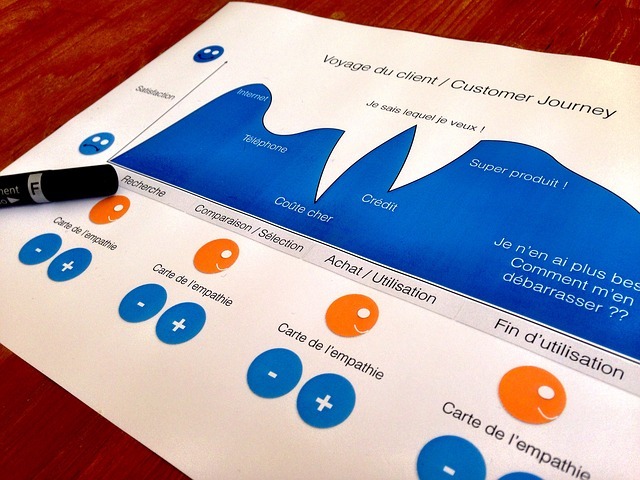Proximis’ new white paper “Unified Commerce prevails” highlights a corporate strategy for digital commerce for the entire digital commerce ecosystem.
 Delighted to have participated in the writing of the Proximis white paper, Clever Age analyses it for you !
Delighted to have participated in the writing of the Proximis white paper, Clever Age analyses it for you !
At the core of the Unified Commerce concept is consumer satisfaction : Various usages during the purchasing process are central to the reflection. Sales and the conversion rate of the merchant depend on the fluidity of the consumer’s journey. A rich, seamless shopping experience, with multiple customized services, allows the customer to appreciate the merchant’s promise and to transform his journey into an effective sale. It is this fluid and optimal experience that unified commerce guarantees.
Unified commerce becomes a winning strategy for retailers and consumers
Faced with the domination of digital pure players and the Covid 19 health crisis, retailers have had to adapt, and those who have bet on the unified commerce strategy have seen significant results in a very turbulent period. The promises made to the customer, the flexibility and efficiency of the model, and the opportunities it creates have allowed companies to significantly increase their online sales. The secret of this success is to put the customer at the center of the reflection, taking into consideration his behaviors, his usages, his attention span. The merchant must be able to adapt to the customer if he wants to convert, and therefore propose an open, fluid and efficient purchase path – with logistics at the service of the consumer, a unified shopping cart attached to this customer and an ever wider range of services available.
One of the key pillars for building a unified business : the unified shopping cart
The unified shopping cart is a cart that is attached to a customer and not restricted to a single sales channel. It follows the consumer throughout his journey, regardless of his location/tool/usage, thus simplifies his path and enables a fluidity at each stage of the journey. The link between the different touchpoints (store, web, mobile app, social networks…) is guaranteed, the customer is satisfied and reassured. He finds the merchant’s promises regularly, with a single voice and can, in complete safety, convert his project into a real sale.
 For unified commerce to work, data must be available and communicated to create value. Data around products, customers and inventory is at the core of digital commerce – especially for unified commerce. Centralizing customer, stock and product data in a DataHub allows to feed different applications including e-commerce, and to give relevant information to the customer across his channels. Thus, the personalization according to customer habits or recommendations are services offered by the merchant and reinforce the promise made to the consumer. Similarly, the availability of products in the network’s stores, the possibility of picking up an order in-store, by delivery, by courier… are conveniences that are now essential to customer satisfaction – therefore to conversion and consumer loyalty. Leveraging the data collected by the retailer not only serves the customer, but also the company : using and putting the data into perspective can improve the retailer’s margins by prioritizing the choices that are both the most relevant to the customer and the most profitable for the company.
For unified commerce to work, data must be available and communicated to create value. Data around products, customers and inventory is at the core of digital commerce – especially for unified commerce. Centralizing customer, stock and product data in a DataHub allows to feed different applications including e-commerce, and to give relevant information to the customer across his channels. Thus, the personalization according to customer habits or recommendations are services offered by the merchant and reinforce the promise made to the consumer. Similarly, the availability of products in the network’s stores, the possibility of picking up an order in-store, by delivery, by courier… are conveniences that are now essential to customer satisfaction – therefore to conversion and consumer loyalty. Leveraging the data collected by the retailer not only serves the customer, but also the company : using and putting the data into perspective can improve the retailer’s margins by prioritizing the choices that are both the most relevant to the customer and the most profitable for the company.

The main opportunities of this strategy : efficiency, flexibility, simplification and innovation
The Time To Market of a unified commerce solution is fast – it allows us to react quickly to market or consumer changes and to adapt its digital response to an unexpected situation – such as the Covid 19 health crisis. As the transformation of the commercial ecosystem continues ; with new sales channels, the repositioning of existing channels – website, physical stores… – is inevitable. Unified commerce contributes to a more global sales strategy : it helps strengthen the links between the different channels, breaking down existing silos to support cross-channel logic (encouraging sales on other channels, calculating performance based on customer usage and not on sales channels…), in particular through unified and flexible technological tools that are easily scalable.
 The unified commerce presented and detailed in this white paper is a subject at the heart of the digital evolution of companies : the development of a multiple customer journey, the fluidity of exchanges between the different points of contact, the improvement of conversion through a unified shopping cart are indeed key points for the digital success of a company. In order to achieve this success, I believe it is essential not to forget the data : it is the foundation that gives value to unified commerce. The data allows us to build services customized to the consumer, to follow him throughout his journey and to guide him if necessary. The data allows us to measure the efficiency to adapt the response to the consumer according to the company’s strategies. Finally, it is at the heart of the future of digital commerce by making it possible to know the customer, to provide precise information on WHAT, WHO, WHERE and WHEN, which are the keys to customer satisfaction. Thus, whether it is product data or customer data, the consolidation, unification and transmission of these data are the foundation of any e-commerce strategy, a fortiori that of unified commerce.
The unified commerce presented and detailed in this white paper is a subject at the heart of the digital evolution of companies : the development of a multiple customer journey, the fluidity of exchanges between the different points of contact, the improvement of conversion through a unified shopping cart are indeed key points for the digital success of a company. In order to achieve this success, I believe it is essential not to forget the data : it is the foundation that gives value to unified commerce. The data allows us to build services customized to the consumer, to follow him throughout his journey and to guide him if necessary. The data allows us to measure the efficiency to adapt the response to the consumer according to the company’s strategies. Finally, it is at the heart of the future of digital commerce by making it possible to know the customer, to provide precise information on WHAT, WHO, WHERE and WHEN, which are the keys to customer satisfaction. Thus, whether it is product data or customer data, the consolidation, unification and transmission of these data are the foundation of any e-commerce strategy, a fortiori that of unified commerce.
